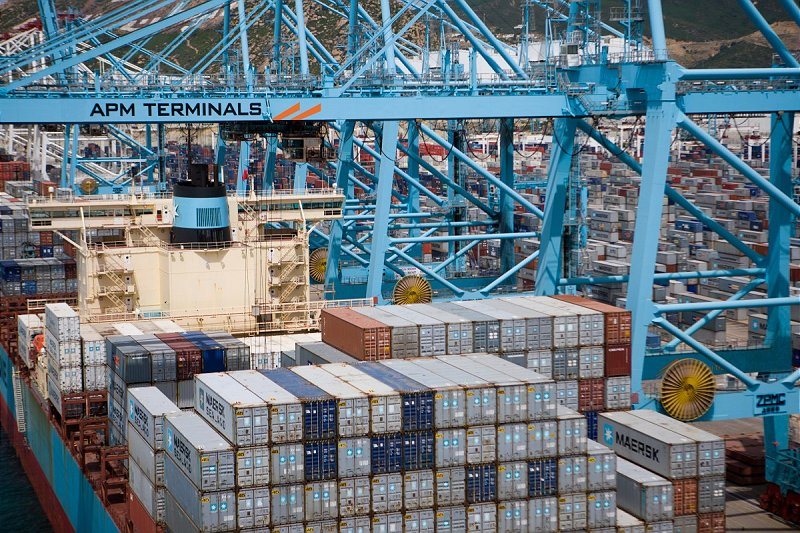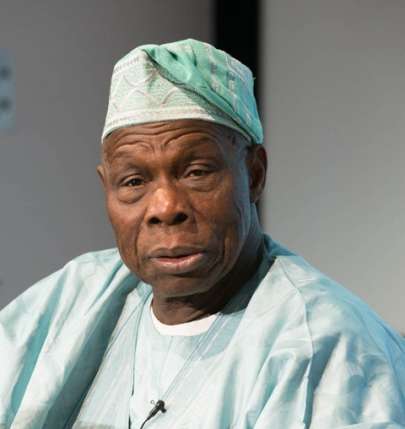“The efficiency of the ports is in multiples of what it was prior to the concession.
“There is no waiting time for ships as they come into Apapa; every one docks immediately and begins the discharge.
“I remember when I was working in Lagos, as you are driving on the Marina, you used to have a large flotilla of ships waiting to berth. Now it looks as if there is not enough business in the ports, but it is really because of the work that all these companies are doing.
“With all the improvements in the investments that are taking place, we are heading towards a situation of a significant impact.” These were the bright words uttered by Dr. Samsudeen Usman, then Minister of National Planning, when he as the Chairman of the Monitoring and Implementation Committee of the National Council on Privatization, paid a visit to the port facilities around Apapa in 2013.
This view is widely held by Nigerians who remember the extremely poor state of the nation’s seaports prior to concessioning. When that past is juxtaposed with the present, it becomes clear that port concessioning is one of the best policies to have been formulated and implemented in Nigeria since the year 2000 AD; nay, since independence.
In it lies the kernel that is unlocking the maritime potentials of this country. Today our ports are ever increasing inproductivity and efficiency, and are only encumbered by outside circumstances that the government is fighting to fix. Today, port operations can be said to be of very high quality, but it was not always like that for our country.
In the beginning
Prior to the concessioning of ports to private operators in 2006, doing business in the nation’s ports was a hellish experience laced with a myriad of problems, some of which were;
- Turnaround time for ships was too long, and businesses had to brace themselves for weeks if not months of endless waiting before their cargo could be loaded or discharged.
- Most of the few cargo-handling facilities owned by the NPA were moribund, so shipping companies had to hire such facilities from private sector sources, leading to extra costs.
- Dwell time for goods in port was so long that overtime cargo filled the most active seaports and led to massive port congestion.
- Labour for ship work was controlled by a mafia that controlled dockworker unions and had no scruples supplying less than the manpower paid for.
- Many port premises that could have been put to good use were abandoned, giving maritime businesses less options.
- In the road sections of the ports, massive portholes were the norm, rather than the exception, and this did nothing to reduce waste of man hours brought about by snail-like movement of goods to and from the ports. The resulting congestion led to consignments becoming untraceable as if they suddenly disappeared into thin air, and in such cases, NPA often seemed helpless in effecting the return of such absconded cargoes, to the chagrin of hardworking businesspeople.
- As a result of porous entry points, dangerous miscreants also known as wharf rats swarmed the ports to also eke out their daily bread, leading to predictable tales of woe on the part of responsible business people.
So it happened that as the clocks chimed and welcomed humanity into a new century, Nigeria’s maritime sector which, accounted for 70% of all seaborne trade in West Africa, and catered for the trading needs of one fifth of the black race, was still steeped in backwardness; and her ports were ranked as some of the most inefficient on earth.
To be fair to the Federal Government, it was not for want of trying that the maritime system laidreposed in a hopelessly shambolic and inefficient state. The government had long made sincere efforts to pull the ports sector together, but something was missing. In 1955, the earlier situation where there was multiplicity of port administration and massive duplication of functions gave way as the Nigerian Ports Authority (NPA) was streamlined. But this reform brought its own problem – that of over-concentration and unaccountable government control. The result was increased inefficiency and corruption.
The 1970’s oil boom brought positive economic dilemmas to the government, as even a high government official is reported to have at that time ‘lamented’ that Nigeria’s problem was not money but how to spend it. The twin sibling of this dilemma was unprecedented port congestion, as the economy, suddenly awash with affluence, began to expand massively, but without the support of an efficient port structure to underpin it.
The so called ‘Cement Armada’ of the 1970s shows how a booming economy missed a golden chance to rise to the next level because there was no coherent policy guiding the strategic maritime sector. In that period when money ‘flowed like water’, there arose a building boom as the government and people sought to build better houses and other edifices. So the government decided to increase the supply of construction inputs in the country (which in itself is a good thing). One of the component parts of this policy – boosting the importation of cement – was ordinarily a very good one as it had the potential to crash the price of cement, significantly reducing construction costs. But because the port administration was in a state of economic anomie and dysfunction, reverse became the result. The ports became congested with ships loaded with cement that were unable to berth in a severe case of maritime constipation, making it extremely difficult for goods to transit in or out of the economic apertures of the country. That multi-year port congestion became a calamitous malady that gripped the nation and arrested development for much of the oil boom years of the 70s. (It is not a coincidence that Nigeria only became Africa’s largest economy in 2014 during the time of private concessioning of the ports.)
Reeling from the painful experiences of congestion in the 70’s; in the 1980s the Government made new efforts to reform the Nigerian Ports Authority.
NPA Management was restructured into 4 zones: Western, Central, Eastern and Headquarters and Nigerian Ports PLC was created. But the policy failed abysmally due to rear-guard action from the diehard culture of centralization. Government interference was rife and patronage and self-enrichment by some government officials overseeing chunks of the maritime sector went to a whole new level. Hard currency earnings of Nigerian Ports PLC, instead of being used to improve port infrastructure disappeared into private pockets.
The birth of the port concession policy
It was in this situation that the Government in 2001 struck maritime gold when it hit upon the idea of concessioning the ports to qualified private operators.
Dutch firm Royal Haskoning BV was commissioned to study Nigerian ports preparatory to the reform. The resulting report, called Haskoning Study was submitted to the Federal Government and was accepted as a cogent x-ray of the Nigerian seaport system. It called for critical innovations.
It criticized the over-centralisation of administration that saw NPA function as both regulator and operator; the overlap of authority in the system and the duplication of efforts. It recommended a “Landlord” port administration model where Government’s role would be restricted to policy formulation while private operators undertake the day to day running of terminal operations, stevedoring, warehousing; and investments in port equipment and infrastructure, among other activities. The report called for NPA to be unbundled into three zones and for concessions by open bidding.
The National Council on Privatisation (NCP) soon endorsed the “landlord” model, and under a new transport policy NPA was given the role technical regulator to manage the ports for which there were no bids. The National Transport Commission (NTC) was to become commercial regulator while National Ports Commission would become overall coordinating agency for the ports sector. Five landlord port authorities were slated for Lagos; the Niger Delta; PH; Calabar; and the inland ports.
A total of 25 concessions were identified in 11 ports and there were bids from 110 companies to manage 8 ports: Bonny, Calabar, Koko, Port Harcourt, Sapele, Apapa, Tin Can & RORO.
With bids submitted by March 2005, concession commenced in 2006 with 20 concessions concluded. In March 2006 the concessionaires commenced operations.
The flagship concession, Apapa Container Terminal was signed in March 2006 with APM Terminals, which had taken over P&O Nedlloyd earlier in the year. The Danish shipping firm, A.P. Moller (APM Terminals’ parent company beat 25 other bidders to the 25-year concession.
Impact of port concession policy on the industry (a report card)
In a goodwill message delivered at a compliance and monitoring workshop organised by the Nigerian Ports Authority (NPA) recently, Chairman, Seaport Terminal Operators Association of Nigeria (STOAN) Princess (Dr.) Vicky Haastrup, listed several positive developments that have taken place in the country’s ports in the last nine years due to the policy of port concession;-
Infrastructure
- Rehabilitation and Reconstruction of quay aprons and stacking areas
- Expansion and Reconstruction of container terminals
- Rehabilitation of terminal access roads
- Provision of lightening facilities including generating sets
- Rehabilitation of the sheds/warehouses
- Reconstruction of Drainages
- Construction of Perimeter Fencing and Gate Houses
- Improved workshop facilities of modern standards
- Plants and equipment
- Acquisition of modern state of art forklifts
- Acquisition of container handlers for cellular trade demand such as Gantry cranes, Reach stackers, Handlers Mafi- tugs etc.
- Stevedore services and dock labour reforms
- Stream-lining stevedoring companies
- Establishment of an acceptable manning scale to ensure high productivity
- Application of direct interview selection and employment of dock labourers with joint effort of stevedoring contractors under the supervision of NIMASA
- üElimination of zoning and permanent berth ownership by dock labourers
- üImproved salary structure and better welfare packages
- üTraining and re-training as well as capacity building opportunities
- The application of these strategies have resulted in the following;
- üContinuous ship discharge/loading operations within working time without erratic stoppage of ship operations.
- üStrict monitoring of allocated labour to achieve projected productivity
- üAchievement of high level of discipline and control of extortion
- üEradication of pilferages and reduction of damages to cargoes and properties as a result of effective safety and security management
- üImproved turn-around time of vessels, and consequently, increased productivity
- üElimination of under-declaration of cargoes, leading to more revenue generation for the government , due to draft survey exercise and effective documentation”
On security she said, “In addressing the security challenges of the ports, the concessionaires apart from constructing standardized perimeter fencing, made the following provisions;-
A well trained security outfit, that is compliant with the (NIMASA) certification in compliance to ISPS Code
Installation of Security gadgets such as CCTV, and improved communication system
Construction of security posts and watchtowers at designated areas in the terminal
Waterfront security to an extent has improved in some ports. In order to forestall fraud and other corrupt vices associated with bureaucratic processes, concessionaires have expended huge capital in the establishment of I.T compliant processes which also are connected to the Nigeria Customs Service system, thereby reducing terminal service-time and unnecessary procedures.”
On the impact of statutory agencies in the concession regime, she said; “It must be noted that relevant statutory agencies such as Nigeria Customs Service, NPA, NIMASA etc., have contributed to the present port development and trade facilitation by
Channel expansion and draught increase which have enhanced larger vessels reception
Creation of ships’ lane according to trade for effective traffic control
Concept of Build Operate And Transfer (BOT) on Green Field Port development which has increased capacity expansion and service choice.”
“The effects of these well-deserved huge capital investment are the improvement in the Cargo Throughput and Vessel Traffic generation,” she added.
Prospects for the future
Speaking on future prospects of the policy, the STOAN boss said; “Let me assure you that the Terminal Operators WILL CONTINUE to add value to the port system in Nigeria to be able to compete favourably with other ports of the world. The operators here in the last eight years have done comprehensive economic and infrastructural developments in our various terminals. We have created jobs, and promoted industrial harmony with the hope of making the Nigerian ports the hub of Africa.
“The figures of revenue accruing to the Nigeria Customs Service, NIMASA, NPA which are all government agencies are testimonies to this statement. In the face of dwindling revenue, a good place to start the repositioning of Nigeria’s economy is to swiftly re-energize the port concession by passing the Port and Harbours Bill currently before the National Assembly.”
Speaking on factors that still pose significant threats to smooth port operations and maritime development in Nigeria, she listed some issues that the next Minister of Transport will do well to look into
- Inadequate provision of pilotage facilities which reduces berth occupancy/utility rate
- Irregular sweeping of the habour bed reducing draft and endangering vessels berthing
- Insecurity of vessels at the anchorage and waterfront of the harbours
- Customs delay on ship pratique on arrival
- Inconsistent cargo release processes in the terminals and delays associated therein even when goods have been duly released and cleared in line with the ASYCUDA++ concept
- Aged vessels with archaic handling facilities calling at the terminals
- Inadequate transport network and road traffic congestion
- Delays attributed to importers and Freight Forwarders in the evacuation and delivery of cargoes due to inadequate warehousing logistics and problems associated with finance.
- Incessant removal of management in the maritime industry based on political patronage rather than professional considerations thereby hindering policy implementation continuity, in line with international best practice.
- Diversion of vessels from other terminals and ports to a particular terminal/port thereby creating monopolistic environment
- Host community restiveness and shanty villages within the ports environment
- Arrest of vessels at berth and attendant consequences.
- Poor power generating system
- Intermittent ASYCUDA++ connectivity failure
- Frictions among maritime statutory agencies due to overlapping functions.
- Poor implementation of Cabotage regime
- Lack of National Carrier Capacity for UNCTAD 40:40:20
- Over demand on road transport facilities
- Lack of central truck holding–bay in the port as all spaces were concessioned
- Concentration of tank farms in the port environment which has constituted serious security threat to lives and property
Conclusion
With the myriad of failed or struggling policies littering the economic sphere of the country, the Port Concession Policy is a clear winner. It is one policy that should never be permitted to somersault if this country is to achieve its full economic potential. The current port operators have discharged themselves creditably well and are a star economic team that should not be permitted to disband. The Government should assiduously listen to their views on how the ports can be further developed, and the 8th National Assembly should re-energize port concession by passing the Port and Harbours Bill into law.
The last word goes to no other than the Executive Secretary of Nigerian Shippers’ Council, Barrister Hassan Bello. Recently, he said of the concessioned terminals; “If you look at turnaround time for ships, it used to be 21 days but now three to four days and ships have discharged their cargo and they are gone. This is because appropriate technology has been introduced at the terminals.”
Port concession has indeed given our economy the wings of an eagle.
Copyright Ships & Ports Ltd. Permission to use quotations from this article is granted subject to appropriate credit given to www.shipsandports.com.ng as the source.


